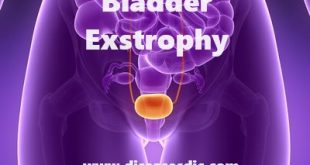Definition
Bleeding disorder is a group of conditions that result when the blood cannot clot properly. In normal clotting, platelets, a type of blood cell, stick together and form a plug at the site of an injured blood vessel. Proteins in the blood called clotting factors then interact to form a fibrin clot, essentially a gel plug, which holds the platelets in place and allows healing to occur at the site of the injury while preventing blood from escaping the blood vessel.
Bleeding Disorder Categories
There are several types of bleeding disorders, many of which are named for the specific clotting factor that is deficient.
Hemophilia is the best-known inherited bleeding disorder. There are two main types:
- Hemophilia A, also called Factor VIII hemophilia, is caused by a lack of the blood clotting factor VIII.
- Hemophilia B, also called Factor IX hemophilia or Chistmas disease, is caused by a lack of the blood clotting factor IX.
Coagulation Cascade
The process by which blood clots are formed involves a complex set of reactions collectively called the coagulation cascade This cascade is stimulated by clotting factors released from damaged cells (extrinsic pathway) and platelets (intrinsic pathway) The coagulation cascade involves many intermediary steps, however the principal events are as follows:
- Clotting factors cause platelets to become sticky and adhere to the damaged region to form a solid plug
- These factors also initiate localized vasoconstriction to reduce blood flow through the damaged region
- Additionally, clotting factors trigger the conversion of the inactive zymogen prothrombin into the activated enzyme thrombin
- Thrombin in turn catalysis the conversion of the soluble plasma protein fibrinogen into an insoluble fibrous form called fibrin
- The fibrin strands form a mesh of fibres around the platelet plug and traps blood cells to form a temporary clot
- When the damaged region is completely repaired, an enzyme (plasmin) is activated to dissolve the clot
Epidemiology and prevalence
Hemophilia A is the most common X-linked genetic disease and the second most common factor deficiency after von Willebrand disease (vWD). The worldwide incidence of hemophilia A is approximately 1 case per 5000 male individuals, with approximately one third of affected individuals not having a family history.
The prevalence of hemophilia A is 20.6 cases per 100,000 male individuals, with 60% of those having severe disease. Hemophilia B is estimated to be approximately 1 case per 25,000-30,000 male births. The prevalence of hemophilia B is 5.3 cases per 100,000 male individuals, with 44% of those having severe disease. Hemophilia B is much less common than hemophilia A. Of all hemophilia cases, 80-85% are hemophilia A, 14% are hemophilia B, and the remainder are various other clotting abnormalities
History
1828 – Term “haemorrhaphilia” first used. Later shortened to “haemophilia.”
1926 – Erik von Willebrand identifies a bleeding disorder, later called von Willebrand disease (VWD)
1940s – Whole blood transfusions given at hospital
1948 – National Hemophilia Foundation (NHF) opens as The Hemophilia Foundation, Inc.
1952 – Researchers describe what is now called factor IX clotting protein
1954 – NHF establishes a Medical Advisory Council, later called Medical and Scientific Advisory Council (MASAC)
1955 – First infusions of factor VIII in plasma form
1957 – Researchers in Sweden identify von Willebrand factor as the cause of VWD
1958 – First use of prophylaxis for hemophilia A
1964 – Dr. Judith Graham Pool discovers cryoprecipitate
1968 – First FVIII concentrate available
1970s – Primary prophylaxis therapy experiments begin
1970s – Freeze-dried plasma-derived factor concentrates available
1977 – Desmopressin identified to treat mild hemophilia and von Willebrand disease
1980s – Factor VIII, FIX and von Willebrand factor genes cloned
1982 – CDC reports first AIDS cases among people with hemophilia
1985 – First inactivated factor concentrates available
1992 – FDA approves first recombinant FVIII products
1995 – Prophylaxis becomes standard of treatment in US
1997 – FDA approves first recombinant FIX products
1998 – First human gene therapy trials begin
2000s – FDA approves first recombinant factor products made without human or animal plasma derivatives
2009 – FDA approves RiaSTAP to treat factor I deficiency
2011 – FDA approves Corifact to treat factor XIII deficiency
2013 – Gene therapy trials underway at three sites in the US
Causes
Normal blood clotting involves as many as 20 different plasma proteins, which are known as blood clotting or coagulation factors. These factors act together with other chemicals to form a substance called fibrin that stops bleeding. Problems can occur when certain coagulation factors are low or missing. Bleeding problems can range from mild to severe.
Some bleeding disorders are present at birth and are passed through families (inherited). Others develop from:
- Illnesses such as vitamin K deficiency or severe liver disease
- Thrombocytopenia, which is an unusually low level of platelets
- Anemia, which is an unusually low level of red blood cells
- Long-term use of powerful antibiotics or anticoagulants. Anticoagulants are medications that thin the blood.
- Bleeding disorders can also result from having poorly working or too few of the blood cells that promote blood clotting (platelets).
- These disorders can also be either inherited or picked up (acquired).
- The side effects of certain drugs often lead to the acquired forms. This list of drugs that can cause bleeding does not include drugs that have to be given as injections or intravenous infusions.
| Aceclofenac | Fluoxetine* | Naproxen |
| Acenocoumarol | Fluvoxamine* | Paroxetine* |
| Acetylsalicylic acid (Aspirin) | Ibuprofen | Phenprocoumon |
| Citalopram* | Indomethacin | Piroxicam |
| Clopidogrel | Ketoprofen | Sertraline* |
| Dexibrufen | Ketorolac | Sulindac |
| Diclofenac | Lornoxicam | Tenoxicam |
| Dicoumarol | Meloxicam | Ticlopidine |
| Escitalopram | Nabumetone | Warfarin |
Herbal drugs (phytomedicines) that can cause bleeding includes
- Ginkgo biloba
- Garlic in large amounts
- Ginger (not dried ginger)
- Ginseng (Asian)
- Feverfew
- Saw Palmetto (Serenoa repens)
- Willow bark
Manifestations
Symptoms of bleeding disorders may include:
- Easy bruising
- Bleeding gums
- Heavy bleeding from small cuts or dental work
- Unexplained nosebleeds
- Heavy menstrual bleeding
- Bleeding into joints, muscles and soft tissues
- Bleeding internally, in abdomen kidneys, and intestines
- Excessive bleeding following surgery
- Blood in vomit. It often resembles coffee grounds.
- Black or bloody bowel movements
- Small purple of red spots under the skin. These are called petechiae.
- Red or pink urine
- Dizziness, headaches, or changes in vision
- Joint pain
Complications associated with bleeding disorder
Joint Damage: This occurs when there is repeated bleeding into the joints. Joint bleeds cause pain and discomfort that can lead to chronic swelling and deformity.
Inhibitors: Inhibitors are antibodies that the body develops because it sees the infused factor as a foreign substance that needs to be destroyed. Antibodies are proteins that eat up the activated factor before it has time to stop the bleeding.
Viral Infection: there is always a remote risk of a new virus being introduced into the blood supply and therefore, into the plasma derived factor concentrates.
Emotional and Psychological: Feelings are normal and everyone experiences positive and negative feelings at different times in their lives. Being diagnosed with a chronic condition or learning that your child has a chronic condition may make a person feel stressed, sad, and sometimes depressed.
Exams and Tests
Complete blood count (CBC)
A complete blood count (CBC) is a blood test used to evaluate your overall health and detect a wide range of disorders, including anemia, infection and leukemia.
Bleeding time
Bleeding time is a crude test of hemostasis (the arrest or stopping of bleeding). It indicates how well platelets interact with blood vessel walls to form blood clots.
Partial thromboplastin time (PTT)
Partial thromboplastin time (PTT) is a blood test that looks at how long it takes for blood to clot. It can help tell if you have a bleeding problem or if your blood does not clot properly.
Platelet aggregation test
A platelet aggregation test checks how well your platelets clump together. The laboratory specialist will look at how the platelets spread out in the liquid part of the blood (plasma) and whether they form clumps after a certain chemical or drug is added. When platelets clump together, the blood sample is clearer. A machine measures the changes in cloudiness and prints a record of the results.
Prothrombin time (PT)
Prothrombin time (PT) is a blood test that measures the time it takes for the liquid portion (plasma) of your blood to clot. Prothrombin, also known as factor II, is just one of many plasma proteins involved in the clotting process. PT test may also be called an INR test. INR (international normalized ratio) stands for a way of standardizing the results of prothrombin time tests, no matter the testing method.
Treatment of bleeding disorder
Treatment depends on the type of disorder. It may include:
Clotting factor replacement
- Bleeding disorder can be treated by replacing missing blood clotting factors. This is called clotting factor replacement therapy. Clotting factors are replaced by injecting (infusing) a clotting factor concentrate into a vein. Infusions of clotting factors help blood to clot normally.
- Clotting factor replacement therapy can treat bleeding episodes or prevent bleeding. It can prevent severe blood loss and complications from bleeding such as damage to muscle, joints, and organs.
Fresh frozen plasma transfusion
- One unit of FFP or thawed plasma is the plasma taken from a unit of whole blood. FFP is frozen within eight hours of collection. FFP contains all coagulation factors in normal concentrations. Thawed plasma may be transfused up to 5 days after thawing and contains slightly decreased levels of Factor V (66+/-9%) and decreased Factor VIII levels (41+/-8%).
- Plasma is free of red blood cells, leukocytes and platelets. One unit is approximately 250mL and must be ABO compatible. Rh factor need not be considered. Since there are no viable leukocytes, plasma does not carry a risk of CMV transmission or Graft Vs. Host Disease (GVHD).
Platelet transfusion
- Platelets are tiny cells in your blood which form clots to help stop bleeding. If the number of platelets (your platelet count) is too low, doctors may recommend a platelet transfusion. If you consent, you will be given platelets collected from donors.
- The platelets are run through a drip and into your bloodstream. The transfusion usually takes 15-30 minutes and can usually be done at an outpatient clinic. Severe side effects are rare, and all donated platelets are tested for infections or viruses.
Medications
Oprelvekin
Oprelvekin is an interleukin, prescribed for severe thrombocytopenia caused by certain chemotherapy treatments.
Phylloquinone
Phylloquinone is often known as vitamin K1, prescribed for coagulation disorders (bleeding problems) in patients with vitamin K deficiency (e.g. Anticoagulant-induced prothrombin deficiency, hypoprothrombinemia). It helps the liver to produce blood-clotting factors.
Thrombin Topical Bovine Origin
Thrombin Topical Bovine Origin is hematologic agent, prescribed for hemostasis and for temporary control of moderately to severely bleeding wounds.
Tranexamic Acid
Tranexamic Acid is an antifibrinolytic agent, used for reduction or prevention of excessive menstrual bleeding. It is also used for prevention of bleeding due to other causes such as peptic ulcer, bypass surgery, prostatic surgery, and overdose of fibrinolytics.
Factor IX
Factor IX is a synthetic protein, clotting factor IX, prescribed for control and prevention of hemorrhagic episodes in patients with hemophilia B.
Fibrinogen Concentrate
Fibrinogen Concentrate is a hematological agent, prescribed for acute bleeding episodes in patients with congenital fibrinogen deficiency.
Goserelin
Goserelin is a synthetic analogue of gonadotropin-releasing hormone (GnRH) agonist, used to suppress production of the sex hormones (testosterone and estrogen), and prescribed for the treatment of endometriosis, breast and prostate cancer.
Aprotinin
This product is derived from bovine lung tissue, which inhibits certain enzymes that increase the risk for bleeding.
Carbazochrome
Carbazochrome is an antihemorrhagic agent, prescribed for bleeding disorders.
Antihemophiliac factor
Antihemophiliac factor is an essential blood-clotting factor, prescribed for controlling and preventing bleeding episodes in people with low levels of factor VIII (hemophilia A) and AHG deficiency. This product contains a man-made form of factor VIII, also called antihemophilic factor.
Prevention and control of bleeding disorder
This list tells you the minimum things to do. You may want to do them more often or as your doctor suggests. Your hemophilia treatment center can help with these:
- A check-up (physical exam) every year.
- A check-up of your joints, bones, and muscles every year.
- Physical therapy (PT) check-up every year.
- Dentist visit every six months to a year.
- Blood tests as often as your doctor suggests:
- Factor level check as needed.
- Check for inhibitors (at least every year).
- Liver tests
- Complete blood count.
- Immune system check.
- Hepatitis A check (if negative, get the shot).
- Hepatitis B check (if negative, get the shot).
- Hepatitis C check.
- X-rays of your joints as needed.
- Meet with social worker to talk about financial and emotional needs every year.
- Talk to genetic counselor about the chances of your children and grandchildren having a bleeding disorder or being carriers (do this at least once and then as needed).
These are things you can do on your own
- Always treat your bleeding quickly. People with hemophilia should take factor right away.
- People with hemophilia should take factor before doing an activity likely to cause a bleed.
- Exercise at least three times a week. Follow the advice of your joint doctor (orthopedist) and physical therapist (PT).
- Brush and floss your teeth at least once a day.
- Eat regular, healthy meals.
- Try to stay near your ideal body weight.
- Get a good night’s sleep.
- Always wear your seat belt.
- Take all the shots (vaccines) that you need and keep them up-to-date.
 Diseases Treatments Dictionary This is complete solution to read all diseases treatments Which covers Prevention, Causes, Symptoms, Medical Terms, Drugs, Prescription, Natural Remedies with cures and Treatments. Most of the common diseases were listed in names, split with categories.
Diseases Treatments Dictionary This is complete solution to read all diseases treatments Which covers Prevention, Causes, Symptoms, Medical Terms, Drugs, Prescription, Natural Remedies with cures and Treatments. Most of the common diseases were listed in names, split with categories.







sir this app is very use full for all medical students i got it very nice and very usefull for me most thanfull to you that you made it for medical students.sir i again thank full to you.
I have frequent nasal bleeding please help…
please consult a doctor.
very detailed like the app keep on give you 5 star rating
.